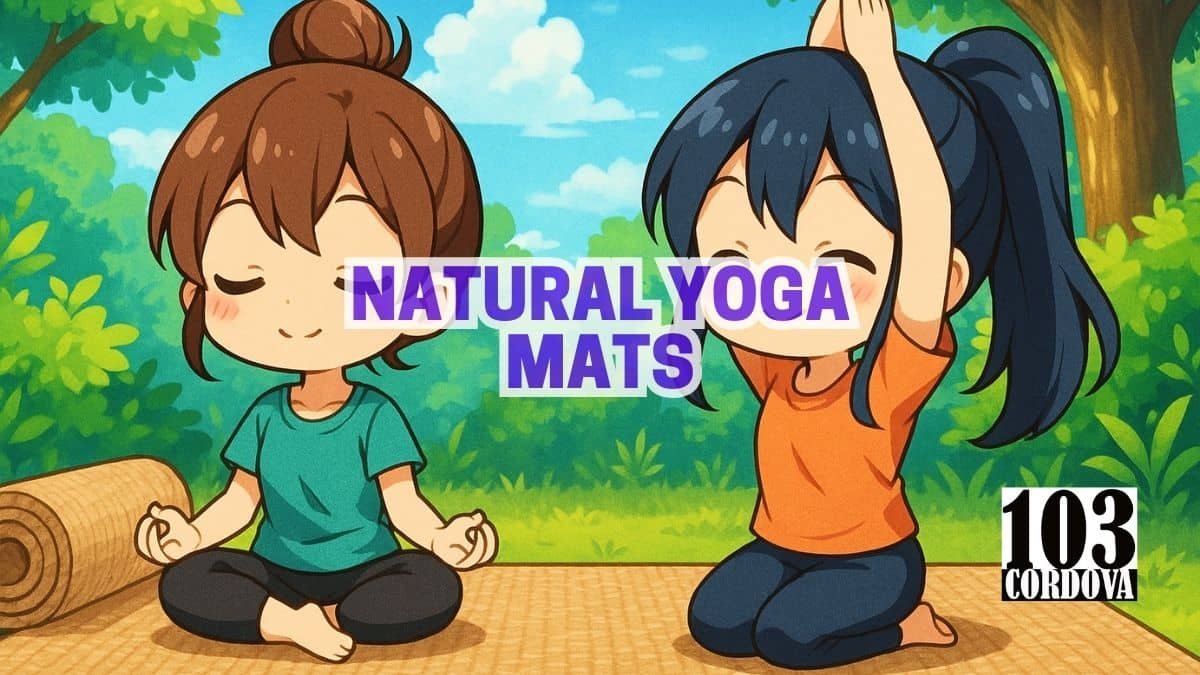Natural yoga mats are becoming more popular among people who care about the planet.
These mats are made with the earth in mind, offering a better choice for both yoga lovers and the environment.
We’ll explore why natural yoga mats are the eco-friendly choice for conscious yogis.
We’ll also share simple facts about how these mats support a healthier world.
By learning what makes them unique, it’s easier to make a responsible and thoughtful decision.
1. Made From Renewable And Biodegradable Materials Like Cork, Natural Rubber, And Organic Cotton
Natural yoga mats are made from plant-based materials like cork, rubber trees, and organic cotton.
These resources grow quickly and can be harvested again without causing long-term harm.
Once a mat is no longer useful, its natural materials can break down safely in the environment.
This makes them a better option than synthetic mats that stay in landfills for years.
Using these mats helps lower pollution and protects ecosystems.
🧘 Why Indian Yoga Mats Are Eco-Friendly and Sustainable
2. Lower Carbon Footprint Due To Eco-Friendly Production Processes
Making natural yoga mats often uses less energy and water than making plastic ones.
Some factories even run on clean energy, like wind or solar power.
The machines used in eco-friendly production are designed to create less waste.
All of these efforts lead to lower carbon emissions, which helps fight climate change.
Choosing a low-impact product helps reduce damage to the environment.
🧘 How an Extra-Wide Yoga Mat Can Improve Your Practice at Home
3. Free From Harmful Chemicals Such As PVC and Phthalates
Plastic yoga mats often contain PVC and phthalates, which are harmful to both people and nature.
Natural yoga mats avoid these and use safer, plant-based ingredients instead.
This means no bad chemicals are released into the air when you unroll your mat.
It’s better for your health and the environment at the same time.
Less toxic waste is also created when these mats are made or thrown away.
🧘 How Indian Yoga Mats Are Different from Western Mats
4. Hypoallergenic And Gentle On Sensitive Skin
People with allergies or skin issues often find natural mats more comfortable.
These mats are free from strong smells and harmful additives.
The materials used are soft and safe, even for daily use.
Natural rubber and cotton feel smooth on the skin and reduce irritation.
This makes them a better choice for anyone who values comfort and safety.
🧘 How to Pick the Best Yoga Mat in Singapore
5. Produced With Ethical And Sustainable Manufacturing Practices
Companies that make natural yoga mats often follow fair labor rules and care about the planet.
Workers are paid fairly and work in safe conditions.
Many brands also choose materials that are grown without harmful chemicals.
This keeps both people and land healthier.
These choices reflect a strong commitment to doing what’s right.
🧘 How Yoga Mat Backpacks Can Boost Your Fitness Routine
6. Durable And Long-Lasting, Reducing Waste Over Time
Natural yoga mats are made to last through many yoga sessions.
They resist tearing and wearing down, even with frequent use.
Because you don’t need to replace them often, less waste ends up in the trash.
A long-lasting mat also means fewer materials are used over time.
This makes them a smart and eco-friendly investment.
🧘 How to Pick the Perfect Extra-Large Yoga Mat for Your Practice
7. Biodegradable Or Compostable At The End Of Their Life
When a natural yoga mat reaches the end of its life, it won’t harm the planet.
Many can be composted or will break down on their own.
This reduces landfill waste and adds nutrients back into the soil.
Some mats even meet compost standards and are safe to use in home compost bins.
They’re designed with the full life cycle in mind.
🧘 Is Yoga a Sport or Lifestyle? Beyond the Mat
8. Provide Excellent Grip And Stability For Safer Yoga Practice
Natural mats made with cork or rubber often give a better grip than plastic ones.
This extra traction helps prevent slipping during tough poses or when hands are sweaty.
A steady mat supports balance and focus during your practice.
It also reduces the risk of injury, especially during fast or flowing movements.
The grip adds safety without needing sticky chemicals.
🧘 How to Choose the Best Bulk Yoga Mats for Your Studio or Gym
9. Packaged In Recyclable And Minimal Materials
Eco-friendly yoga mats often come in packaging that is easy to recycle.
Brands use cardboard, paper ties, or reusable cloth wraps instead of plastic.
These choices cut down on waste and reflect the product’s green values.
Packaging is kept simple to avoid using more materials than needed.
Even the printing is often done with safe, non-toxic ink.
🧘 Expand Your Knowledge of Yoga Practices
10. Support A Mindful Lifestyle Aligned With Environmental Care
Choosing a natural yoga mat shows care for both personal wellness and the earth.
It’s a simple way to reduce your environmental impact.
Your daily habits—like the mat you use—can reflect your deeper values.
This adds meaning to your yoga practice beyond the poses.
It becomes a quiet, daily act of kindness toward the planet.
🧘 Marikina’s Elite Yoga Studio
💡 Conclusion
Natural yoga mats offer real benefits for both yogis and the world around them.
They are made with clean materials, safe processes, and thoughtful design.
Their full life cycle—from beginning to end—shows care for the planet.
Choosing one means you’re supporting better health, fair work, and less waste.
A natural yoga mat is a small but powerful way to practice with purpose.
🧘 Our Services
Join our yoga classes for all ages at 103 Cordova Tower, Marquinton Residences, Cirma Street, Sto. Niño, Marikina City.
Whether you’re a beginner or have experience, our sessions will help you feel better, stronger, and more relaxed.
Everyone is welcome—kids, teens, adults, and seniors!
For more details, message us on Facebook or use the contact form on our website.
You can also call or text us at 0917-622-5780.

